Can 'Government 1.0' manage an upgrade?

It just keeps getting easier to participate in policymaking in the United States, but that may lead to some problems not far down the road.
Today, the FCC debuted a National Broadband discussion site built on the Ideascale crowdsourcing platform which lets users read, discuss, and rank FCC issues in the same fashion as services like Digg and Yahoo Buzz.
Dear AT&T: Don't let Apple make you look bad any more

ISuppli knows what's going on with Apple and AT&T. Based upon its analysis of wireless technology deployments, the market research firm predicted today that Apple will keep its exclusive iPhone deal with AT&T when re-negotiation time comes around next June.
"The main reason Apple is likely to stick with AT&T beyond 2010 is the relatively wide usage and growth expected for the HSPA air standard used by the carrier for 3G data," Francis Sideco, principal analyst for wireless communications at iSuppli said. "FCC investigation notwithstanding, Apple has no reason to move away from its highly successful exclusive deal with AT&T, which has already generated strong growth in iPhone sales and is expected to fuel a continued expansion in the coming years."
China to begin reviewing all song lyrics for 'inappropriate' content

Song lyrics found to be vulgar, violent, or in otherwise poor taste are now facing removal from Chinese Web sites, the Chinese Ministry of Culture has announced.
Starting December 31, every piece of music on Web sites hosted in China needs to be approved by the Ministry of Culture before it can be made available to the public. Even songs which are not in Chinese must be translated and submitted to the government.
A new effort to extend the cloud to the iPhone

The iPhone has proven to be a strong content creation tool, with applications that allow the user to create graphics and presentations, record video, sequence audio, or draft compositions. But while it gives users plenty of tools to create, it doesn't exactly have a uniform tool to let users manage, move, and share their creations: some apps are integrated with some services, others are integrated with different ones...some aren't integrated with anything at all.
Cloud-based storage and collaboration service Box.net claims to provide an answer to this problem, but it needs the apps behind it to make it come true.
Motorola debuts Cliq, with social media-based Android UI
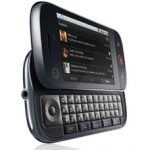
Not to be confused with HTC's Android-based Tattoo, which was known as "Click" before it was released, Motorola today debuted the latest T-Mobile Android called Cliq.
As expected, Cliq is an HVGA touchscreen QWERTY slider with quad-band GSM, WCDMA/EDGE/GPRS and HSPA 7.2, A-GPS, Wi-Fi and Bluetooth 2.0 connectivity. It offers up to 32GB of storage via microSD, but the speed of processor and amount of RAM were not announced today.
Palm Pre sync vs. Apple iTunes, round 2
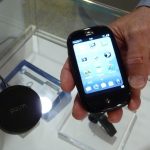
Yesterday was a big day for both Palm and Apple, with Palm debuting its newest WebOS handset called the Pixi, and Apple refreshing its iPod line, iTunes, and iPhone OS.
All the while, though, the cat and mouse game between the two companies over connectivity was continuing. The Palm Pre was launched with the "unofficial" ability to sync with iTunes; and as most people expected, it was blocked by Apple in an incremental iTunes update. Just nine days later, Palm issued the WebOS 1.1 update which, among other things, brought the iTunes media sync functionality back.
China is the next Silicon Valley, proclaims Symbian Foundation director

China Mobile, also known as the mobile network with the most subscribers in the world, has put its considerable weight behind the open source mobile environment, first by offering its own Android-based Open Mobile System "OPhones," and now by teaming with The Symbian Foundation.
In a joint statement with the Symbian Foundation yesterday, China Mobile announced they will now encourage developers to create Symbian apps by including Symbian Signed services in the China Mobile Market submission process, and to support Symbian's app publishing software called Horizon. The addition of both of these services makes the submission and approval of Symbian apps much easier.
AT&T moves toward 90% HSPA rollout completion by 2012, but whither New York?

Earlier this year, AT&T announced its 7.2 Mbps HSPA upgrade, as a part of a plan to improve it wireless data services. The plan included the addition of new cell sites, more 3G spectrum, and thousands of additional fiber backhaul connections on old sites to help manage AT&T's massive wireless traffic driven by the popular and data hungry iPhone.
Today, the wireless network operator announced the HSPA 7.2 rollout will begin in six major US markets this year: Charlotte, Chicago, Dallas, Houston, Los Angeles, and Miami, where six compatible handsets and two LaptopConnect cards are expected to be available to customers.
Steve Jobs returns to the stage with an overhauled iPod Nano

Steve Jobs triumphantly returned to the spotlight to present this year's lineup of new iPods, iPhone OS 3.1, iTunes 9, and improvements to the iTunes store. In iPhone OS 3.1, a free incremental download that goes live today, the App Store has Genius recommendations, and a ringtone store with over 30,000 ringtones from all of the "big four" major labels priced at $1.29 each.
iTunes 9 also goes live today, receiving improved Genius functionality as well. Here, it applies to "Genius Mixes," a Pandora-esque playlist feature where songs of a similar nature are played sequentially. The database for Genius Mixes currently contains over 54 billion songs. iTunes syncing has also been improved, rather than only being able to sync content by playlist, all of the content going to your iPhone or iPod (apps, music, events, photos, etc.) can be arranged.
Popular apps highlight the difference between Android and iPhone
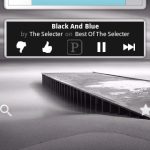
Two of the most popular iPhone apps, Pandora and Facebook, have finally been brought to the Android platform. These apps place increased emphasis on one of Android's strengths that really makes the user experience different from the iPhone: homescreen presence.
Last week, Apple rolled out Facebook 3.0 for the iPhone which improved upon the previous app by adding new features such as Facebook Events and direct-to-Facebook video uploading. It was received with great praise by the iPhone crowd.
Never mind the iPods, there's a new Palm device!
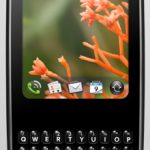
The second WebOS device from Palm, known as the Pixi has officially debuted. Like Palm's other devices, it will be making its debut on Sprint. Palm's Jon Zilber said in the company's official blog this evening that it will be released in time for the holidays, but did not disclose a price.
Looking something like a Pre in the open position, the Pixi has a slightly smaller 2.63" touchscreen (the Pre's screen is 3.1") but a similarly designed full QWERTY keyboard. With quite a narrow profile, the Pixi ends up being Palm's thinnest phone ever, measuring in at .43" in thickness.
For comparison's sake, the iPhone 3G is .48" thick with a 4.5" x 2.4" footprint. The Pixi has a footprint of only 3.9" x 2.3", so while it is marginally thinner than the iPhone, it also is smaller overall.
Nokia completes LTE modem as 4G network rollouts approach
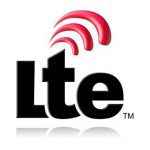
Finnish wireless giant Nokia announced that it has completed trials with the "first ever Long Term Evolution (LTE) capable Internet Modem."
The product upon which the trials were conducted was the Nokia Internet Modem RD-3, a development tool by no means intended for consumer use. The company says it will be used with network vendors as well as measurement equipment manufacturers and operators. The RD-3 is interoperable with GSM/EDGE and WCDMA/HSPA and supports multiple LTE frequency bands with a theoretical peak of 100 Mbps downstream.
HTC Tattoo could be the first 'real' free smartphone
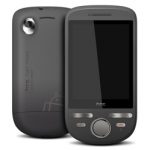
Now that HTC has unveiled its fourth Android handset, one begins to wonder what is next for the Taiwanese company and indeed the Android handsets business as a whole. HTC was the first to release a phone running on Google's open smartphone operating system, and now that it has shown off the Tattoo (formerly known as "Click") the company appears to have foregone design innovation in favor of releasing a cheap device.
The HTC Tattoo has a 528 MHz Qualcomm MSM7225 processor with 256 MB RAM, quad-band GSM/HSPA/UMTS radios, Wi-Fi, Bluetooth 2.1, a 3.2 megapixel camera, 3.5mm headphone jack and microSD-expandable memory. But aside from HTC's Sense UI, which debuted in the Hero last month, the only noteworthy feature of the Tattoo is the ability for users to decorate its chassis with cosmetic designs -- not exactly Earth-shattering stuff.
UK mobile market shrinks with T-Mobile, Orange merger
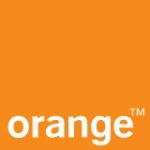
The UK's third and fourth largest mobile network operators, Orange and T-Mobile, will combine in a new joint venture this fall, the companies announced today. If authorized by antitrust regulators, the merger will create the single largest mobile company in the United Kingdom, with an estimated 28.4 million subscribers, or roughly 37% of the market.
While the British mobile phone market is much smaller and denser than its American counterpart, there are some similarities occurring between the two markets that are important to consider. Currently the largest UK operator with a 27% share is Telefonica's O2, which is the exclusive iPhone carrier like AT&T in the US. In second place with 25% of the British market is Vodafone, the company which jointly owns Verizon Wireless, the second place US carrier. The merger of Orange and T-Mobile in the UK would be like Sprint and T-Mobile merging in the United States, breaking up the market into thirds.
FCC ponders a future with multiple 'internets'
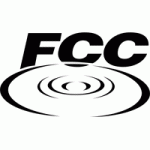
While many of the FCC's broadband workshops have dealt with current, concrete issues such as the deployment, adoption, and utilization of broadband in the United States, Thursday's FCC workshop took a refreshing departure from the here and now -- which in government practices is the equivalent to three years ago -- and spent time discussing the ideas that could potentially change what we know as the Internet.
One of the questions in the discussion was, "What might the Internet architecture look like in ten to twenty years, beyond incremental changes like speed increases?"
Tim's Bio
Tim Conneally was born into dumpster tech. His father was an ARPANET research pioneer and equipped his kids with discarded tech gear, second-hand musical instruments, and government issue foreign language instruction tapes. After years of building Frankenstein computers from rubbish and playing raucous music in clubs across the country (and briefly on MTV) Tim grew into an adult with deep, twisted roots and an eye on the future. He most passionately covers mobile technology, user interfaces and applications, the science and policy of the wireless world, and watching different technologies shrink and converge.
© 1998-2025 BetaNews, Inc. All Rights Reserved. About Us - Privacy Policy - Cookie Policy - Sitemap.
